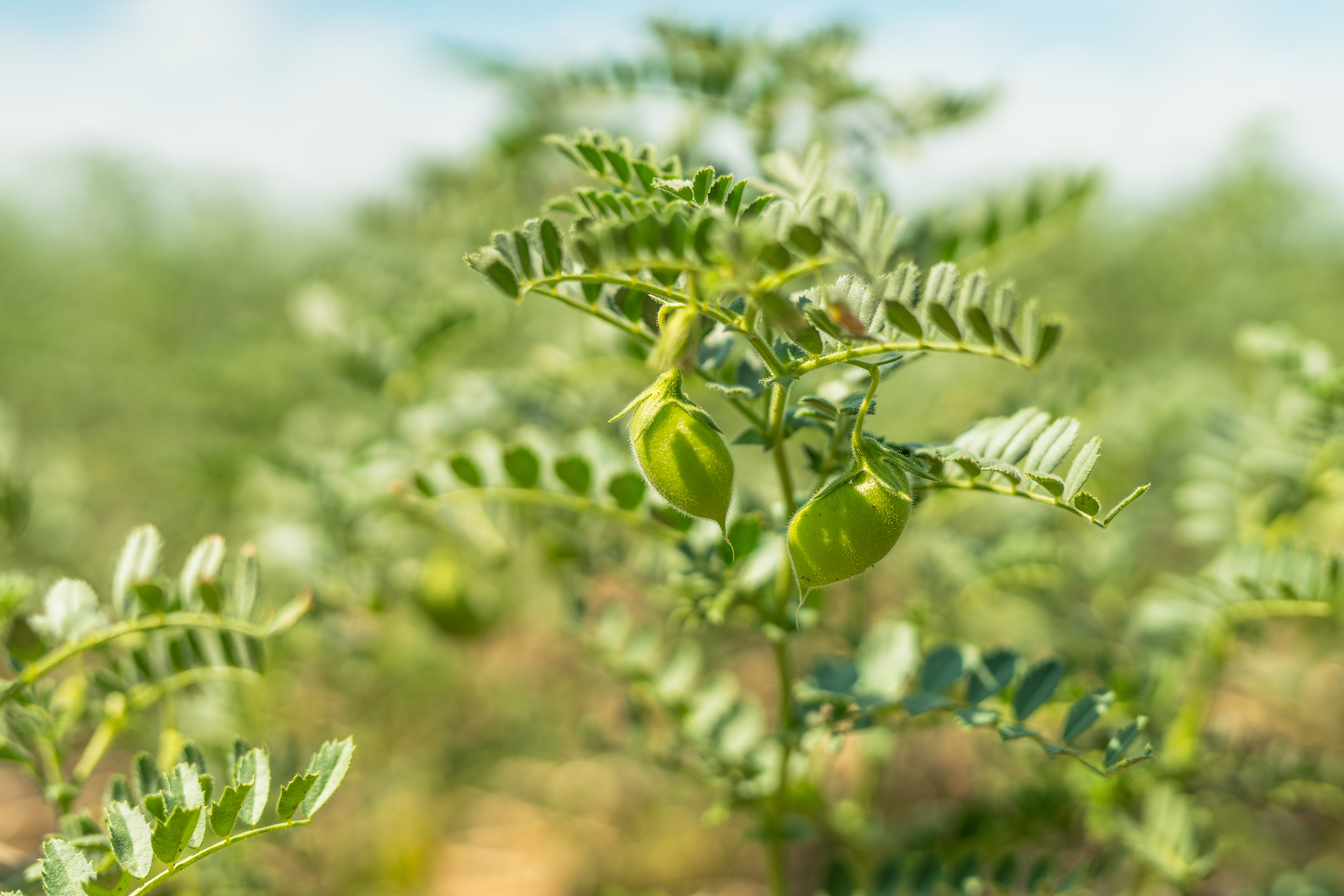Weed Management
Pre-plant and pre-emergent herbicide options are used extensively by experienced chickpea growers. A spring herbicide application, either pre-seed or pre-emergent, is recommended. This provides early-season weed control and may provide control of weeds for which no in-crop control is available. Special care should be taken to control perennial weeds in the fall before growing chickpeas.
Sulfentrazone (Authority®), can be applied either pre-plant incorporated or surface-applied pre-emergent. On most acres, it is mixed with glyphosate in a pre-seed or pre-emergent application. If applied post-seeding before emergence, apply within three days of seeding to prevent crop injury when emerging. Authority® works through root uptake in the soil, meaning precipitation must follow application for proper activation and good weed control. Ten to 20 millimetres (0.393 to 0.787 inches) of precipitation within 10 to 14 days is needed for optimum efficacy. If weeds start to grow before activation, the result will be poor weed control.
Authority (sulfentrazone) absorption by plant roots increases as soil pH decreases. At a soil pH of 6.5 or less, which can occur even in localized areas of the root zone, greater sulfentrazone uptake can occur and explain unpredictable patterns of injury to crops.
Herbicide testing indicates that chickpeas are especially sensitive to many post-emergent herbicides registered for the control of broadleaf weeds in lentils or peas. Sencor® (metribuzin) herbicide is registered for suppression of some broadleaf weed seedlings in chickpeas. The application should take place at the one to three above-ground node stages (maximum crop height six centimetres or 2.4 inches), with the best results when the weeds are small. Application past this crop stage can lead to significant crop injury.
Clethodim-based (Select®/Centurion®), Poast® Ultra, and Quizalofop-based (Assure® II/Yuma® GL) herbicides are registered for control of annual grassy weeds in chickpeas. The application should take place at the one to six leaf stage of the grassy weeds.
If weeds are present, control them early as chickpeas are not a competitive crop. Weed competition can severely reduce yield. If weeds have emerged, apply herbicides at early crop stages. This will improve weed control, reduce competition from the weeds, and usually reduces herbicide injury.
Non-herbicide options may be considered as well. Tillage can have a beneficial effect for control of some weeds while having the opposite effect on others.
Herbicide choice should consider herbicide rotation to slow the development of resistant weeds. Resistant weeds are troublesome in chickpeas simply because they are a less competitive crop and there are limited herbicide options. A few examples of herbicide-resistant weeds that are particularly troublesome for chickpea growers include Group 2 resistant kochia, wild mustard, and cleavers, as well as Group 1 and Group 2 resistant wild oats. Rotating herbicide groups away from Group 1 and 2 products, especially in rotational years where chickpeas are not grown, can help prevent or manage resistant weeds. Research indicates that alternating between two modes of action for wild oat control will double the number of years for resistance build-up, and alternating with a third mode of action will increase the time of resistance build-up to four times as long as for a single mode of action for wild oat control.
Use integrated control methods through the rotation, such as higher seeding rates, promoting quick crop emergence, and using herbicides only when economic thresholds are reached. Preventing kochia from setting viable seed for one or two years greatly reduces kochia populations in a field because the seed is short-lived in the soil.
During periods of crop stress, the ability of the chickpea crop to tolerate herbicide application may be reduced. Crop injury can be reduced by waiting approximately four days after the crop stress occurs before applying herbicide, by maintaining water volumes at label recommendations, and by applying the product during the evening.
Chickpeas can be damaged easily by some herbicides registered for other crops. Sprayer tanks should be thoroughly cleaned before applying any crop protection product to lentils and care taken not to drift herbicides from other fields onto chickpea fields.
Non-herbicide options may be considered, including tillage and higher seeding rates. Tillage may be a tool to reduce kochia populations. Burial of kochia seed to at least one centimetre or deeper can result in reduced germination, or death of the germinated seed before emergence. Spring tillage, even minor, significantly increases the burial and resulting germination of false cleavers and catchweed bedstraw. Farmers should consider limiting spring tillage as part of an integrated weed management program for cleavers.
Post-emergent harrowing of chickpeas is not recommended as it can spread disease and cause severe mechanical crop injury.
Higher seeding rates can increase crop competitiveness against weeds and reduce maturity. However, an increase in crop canopy may lead to higher disease levels.
Related Resources
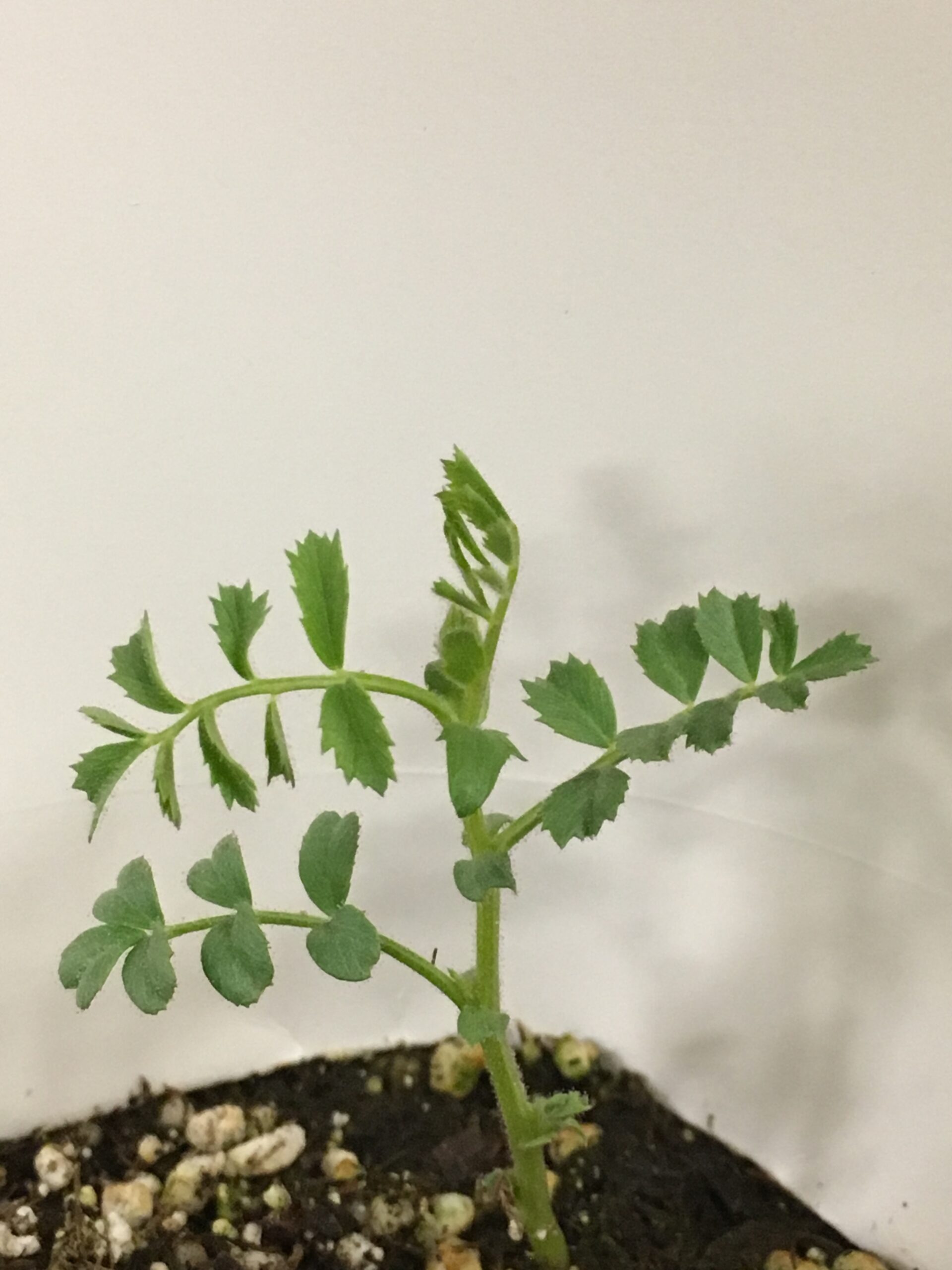
Staging Pulses for Herbicide Applications In-Crop
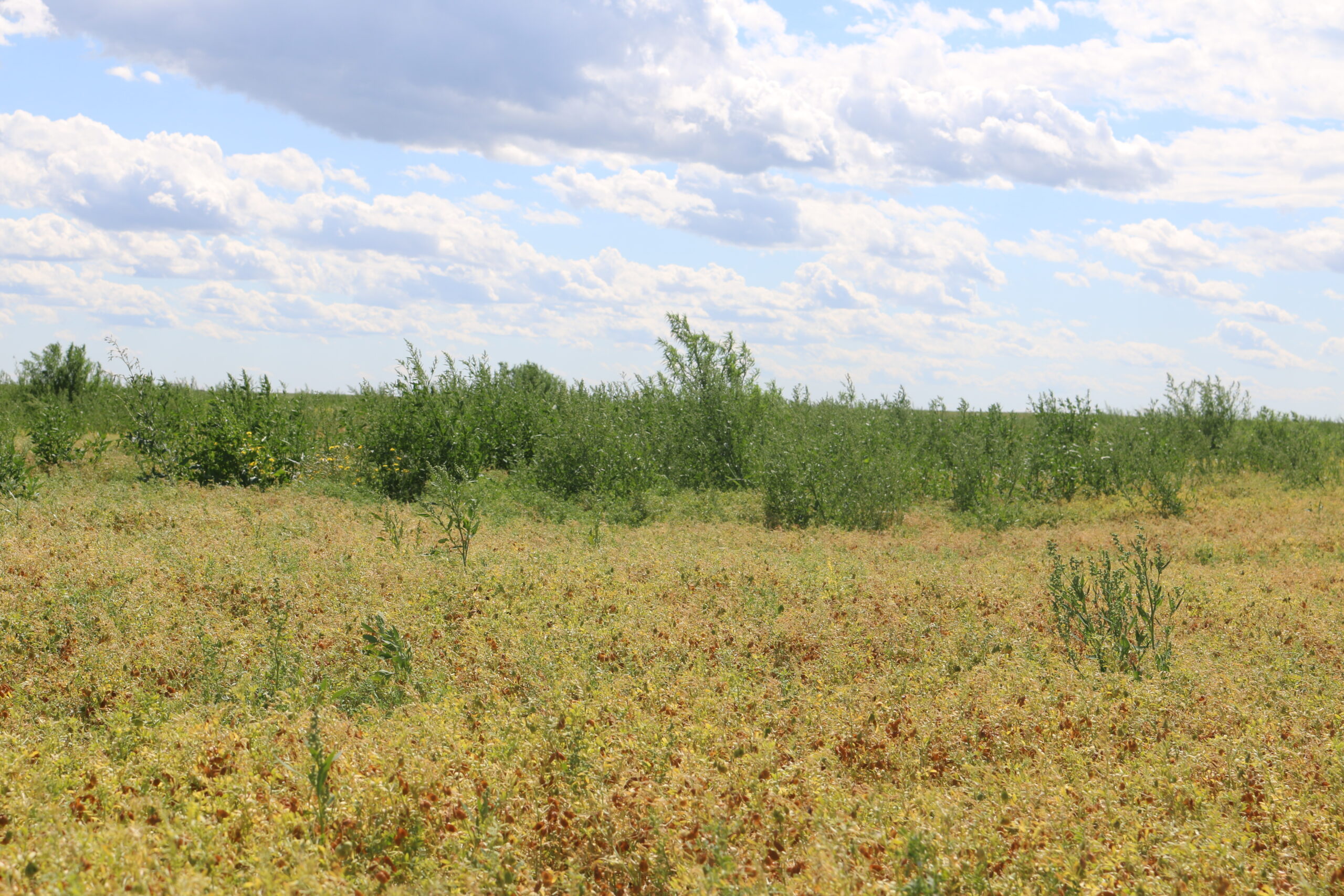
Critical Period of Weed Control in Pulses
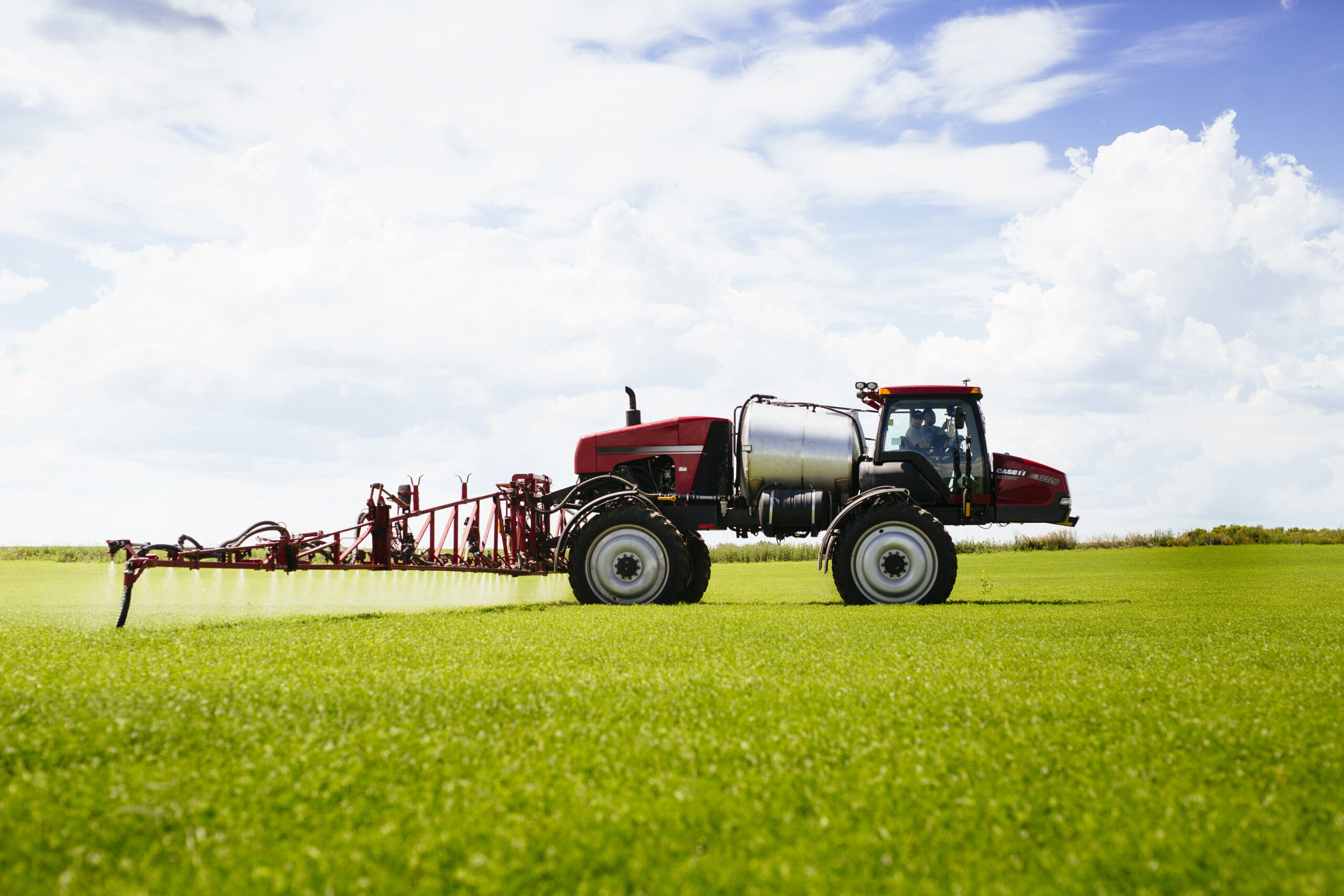
Post-Emergent Herbicide Options for Chickpeas
Disease Management
There are only a few diseases that significantly affect chickpeas. Ascochyta blight is a foliar disease that can impact a chickpea crop with up to 90% yield loss in Kabuli and 50% yield loss in Desi chickpeas. Ascochyta blight can also affect seed quality resulting in lower grades. In chickpeas, Ascochyta blight is much more aggressive than in lentils or peas and is caused by a different Ascochyta species.
The pathogen overwinters on chickpea residue and seed. Both asexual spores and sexual spores can be produced on the residue. The sexual stage produces ascospores, which can spread several miles in the wind and are believed to be responsible for early-season lesions. These ascospores are produced by genetic recombination, meaning the population can become genetically diverse. Research carried out at Agriculture and Agri-Food Canada, Saskatoon, has identified 15 races of Ascochyta rabiei in Western Canada. This not only makes breeding for resistance more of a challenge, but it also increases the likelihood of fungicide-resistant strains developing.
Symptoms of Ascochyta blight include tan or brown lesions on stems, leaves, and pods. The lesions may girdle entire stems, causing them to wilt and die. Dark fruiting bodies, called pycnidia, are formed in the lesions. The pycnidia ooze spores in wet and humid conditions. Spores are spread by rain; thus infection is aided by weather with frequent showers. Plants will show lesions approximately four to seven days following infection. If the weather turns warm and dry, infected plants may survive, but will be delayed in maturity and produce lower yields. Ascochyta blight is also seed-borne, so the use of disease-free seed is critical. Ascochyta blight is also capable of surviving for several years on crop residues in the soil. A minimum four-year crop rotation will reduce the risk of infection.
Fungicides registered for control of Ascochyta blight in chickpeas work in two ways: protective and curative. Protective fungicides work to control disease by creating a barrier on the plant’s surface to prevent the spores from germinating and infecting the tissue, and are most effective if they are applied preventatively, or before the fungus penetrates the plant. Curative fungicide activity is limited to the early part of the infection, and only for the first 24 to 36 hours after spore germination and infection. These curative products do not repair tissue that has already been damaged or killed by the fungus. No fungicide will protect against disease already established in the plant or once lesions form. All fungicides will protect against spores entering the plant (protectant activity), while only some products have curative activity. Fungicides that are currently available will protect against disease for no longer than two weeks. Refer to individual labels for more information.
The following are some key guidelines for a well-integrated pest management program for Ascochyta in chickpeas:
- Rotation: Three- to four-year crop rotation to non-host crops is necessary to reduce spores from previous crop stubble.
- Field Choice: Avoid planting chickpeas adjacent to the previous year’s chickpea fields to reduce the spread of residue and wind-borne spores and use non-host strips at field edges. Field selection should be at least 500 metres away from fields that had a chickpea crop the previous season.
- Type of Chickpea: Choose a class based on the risk of Ascochyta. Kabuli chickpeas are much more susceptible to Ascochyta blight compared to Desi chickpeas. Unifoliate Kabuli varieties appear to be much more susceptible to severe Ascochyta blight, compared to fern leaf Kabuli.
- Variety Choice: Choose varieties that are as disease resistant as possible. Currently, the best resistance level available is fair, and therefore, select varieties with a “fair” rating for Ascochyta, instead of “poor” or “very poor”.
- Seed Quality: Plant seed that has zero levels of Ascochyta, or levels below 0.3% Ascochyta rabei. Use seed treatments if needed.
- Seeding Rate: Target optimum plant densities (Kabuli 38 to 44 plants/m2, 3 to 3.3 plants/ft2, Desi 44 to 50 plants/m2 or 3.3 to 4.5 plants/ft2). Increasing plant density above the recommended range with highly susceptible varieties may increase disease severity.
- Fungicide Use: First application at the early seedling stage (use earliest label staging) is critical to prevent or slow early development. Follow-up field scouting and additional fungicide applications may be necessary.
- Scout Often: Begin at the seedling stage, two to three weeks after seeding. Scout every three to seven days during the seedling stage. Rain and/or high humidity means scouting frequency should be increased. If conditions are drier and the chickpea plant gets past the seedling stage, scouting frequency can be decreased to every seven to 10 days.
A disease decision support checklist for Ascochyta has been developed to aid in determining risk rating for Ascochyta and to determine appropriate management strategies.
Management of Fungicide Resistance
This is extremely important for Ascochyta in chickpeas due to the genetic diversity of the pathogen, and the fact that isolates with resistance to strobilurin fungicides have been confirmed in Saskatchewan. If a pathogen is resistant to one fungicide in the strobilurin group, it will be resistant to other fungicides in that group.
The following guidelines, adopted from the North American Fungicide Resistance Action Committee, are recommended to prevent the increase of fungicide-resistant fungi:
- Do not use a fungicide that contains only a strobilurin active unless it is tank mixed with a non-strobilurin fungicide.
- Rotate the use of a fungicide with a strobilurin product in the mix (or tank mixed) with a non-strobilurin product.
- Do not use more than two applications per year of any fungicide containing a strobilurin on the same field.
- Do not apply more than two applications of the same group in a single growing season (except for chlorothalonil, which can be applied three times).
These are caused by a complex of pathogens including species of Pythium, Fusarium, Rhizoctonia, and Botrytis. These pathogens are present in all Saskatchewan agricultural soils and can infect and kill individual seedlings from germination to the early flowering stage. Seed rots and seedling blights are most severe when the soil is cool or saturated, and seedling emergence is delayed. Infected seeds may fail to germinate. Infected seedlings will usually turn yellow, wilt, and then die. Stems may be girdled and discoloured at or just below the soil surface and roots may be rotten, allowing the plants to be pulled easily from the soil. Kabuli chickpeas are especially susceptible to rots due to their thin, zero-tannin seed coat. Research has shown chickpeas to be partially resistant to Aphanomyces. If Aphanomyces has been confirmed in a field, chickpeas are a pulse option that can be used in rotation instead of peas or lentils, which are susceptible hosts.
Botrytis attacks chickpeas, both at the seedling stage and in advanced stages. Botrytis grey mould of seedlings may spread down a seed row, resulting in a series of yellow or dead seedlings. Botrytis grey mould is also favoured later in the growing season by dense canopies and moist conditions. Botrytis is usually most evident after flowering and is common on pods, resulting in shrunken, discoloured seed. The infected area is often covered by a dark grey, fuzzy, fungal growth. Botrytis pathogens can survive in the absence of host crops, so rotation has a limited effect on disease levels. Fungicides are available for the control of the late-season development of Botrytis grey mould on chickpeas but need to be applied before symptoms show to be effective.
This disease attacks chickpeas grown in conditions of high rainfall, which produces dense crop canopies. Sclerotinia white mould is more common in crop rotations that include other susceptible broadleaf crops such as canola, mustard, lentils, or peas. Symptoms usually occur in patches, typically in heavier crop areas. Infected plants are initially paler green, and the diseased tissue may be covered by a white, cottony, fungal growth. The plant later becomes bleached in colour and the infected area will easily shred apart, revealing small black fungal resting structures called sclerotia bodies. Sclerotinia becomes evident later in the growing season and if found, may have minimal impact on the crop. In most years it is not common in a lot of the chickpea-growing areas. Fungicides are available to control Sclerotinia. However, they must be applied before the onset of symptoms.
Related Resources
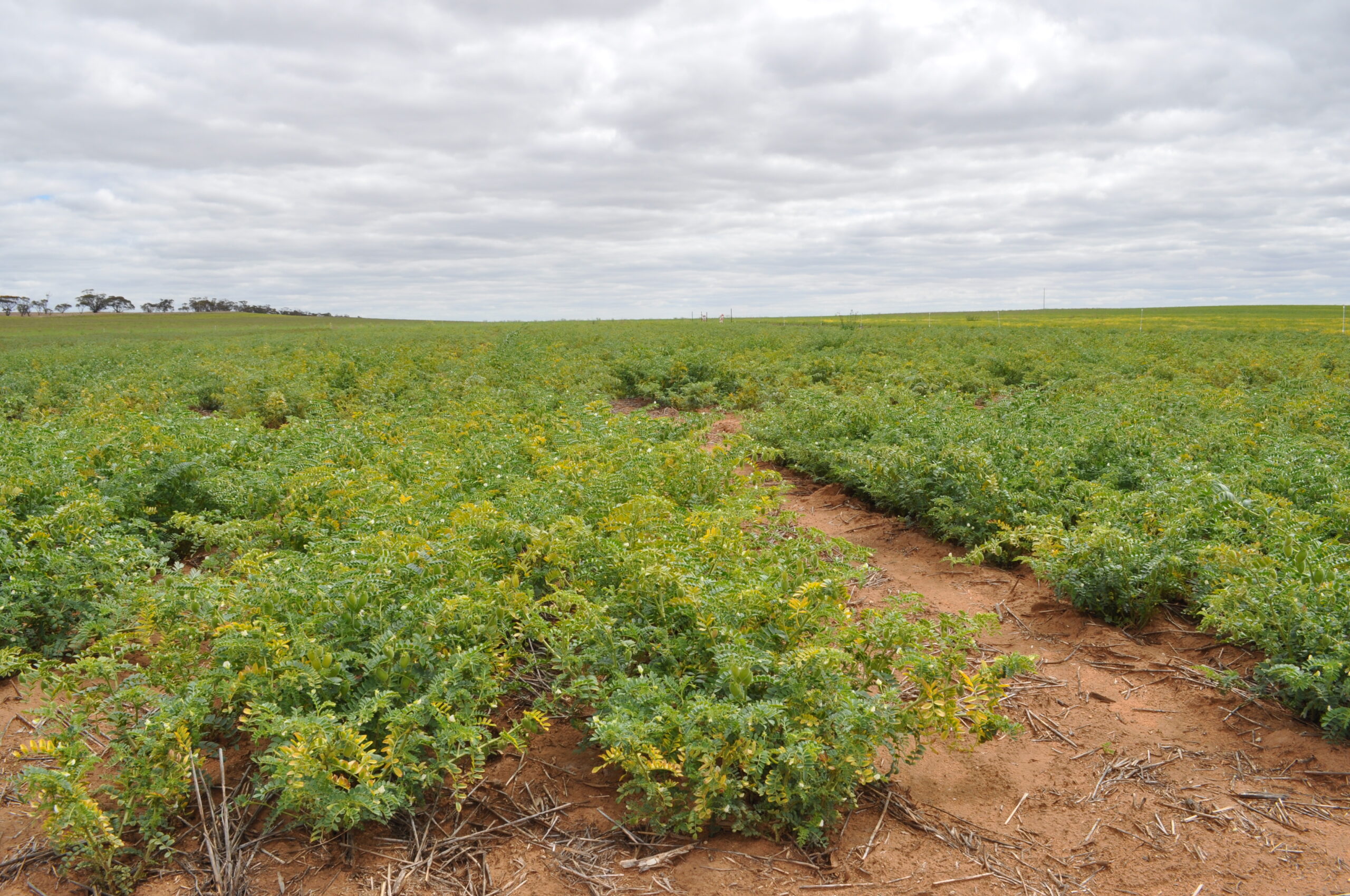
Viruses in Saskatchewan Pulse Crops
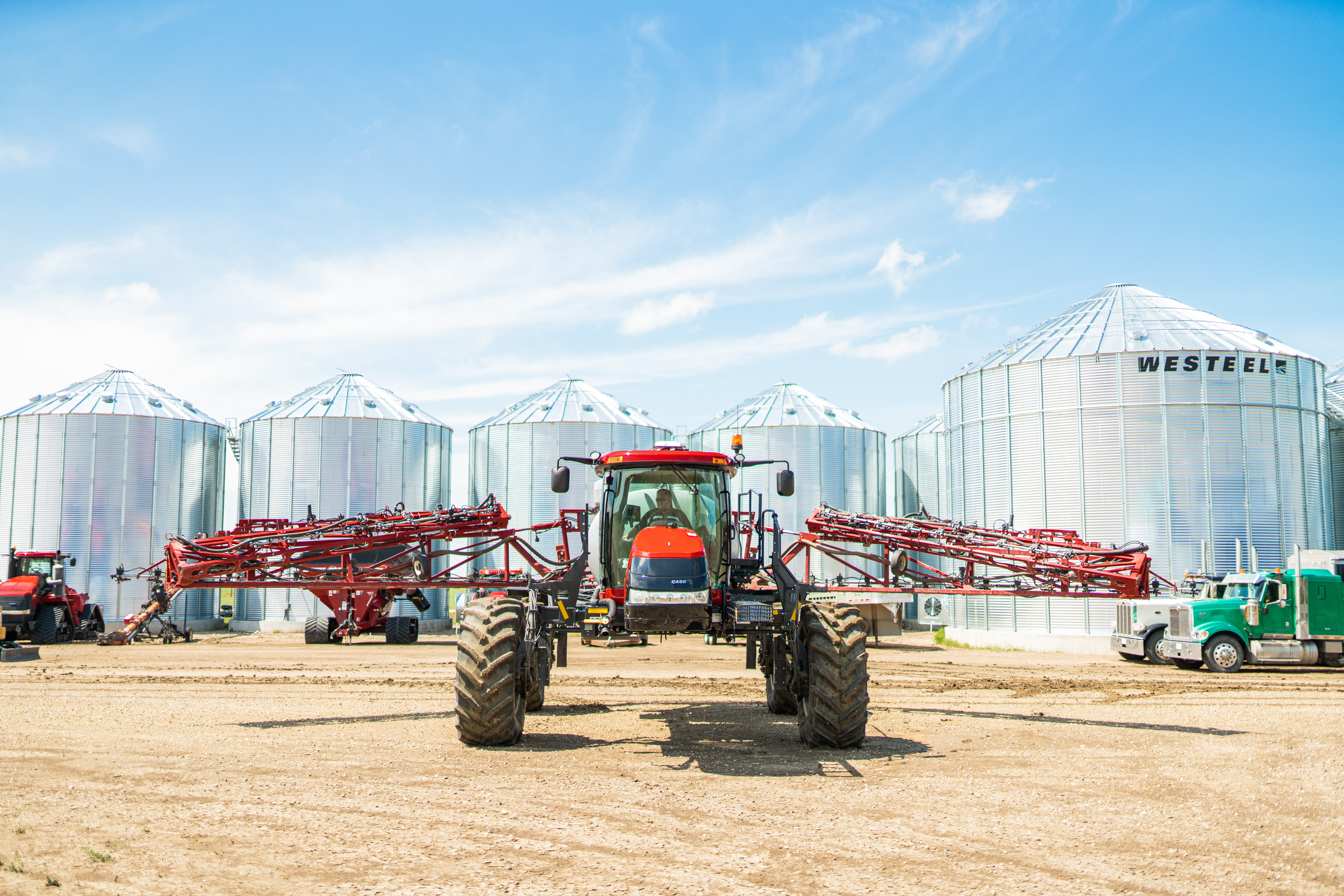
Chickpea Fungicide Options

Fungicide Decision Support Checklist for Chickpeas
Insect Management
Chickpea leaves, stems, and pods are hairy and secrete malic acid. This makes the plant much less attractive to insects compared to other pulse crops.
Cutworms can cause damage to newly emerged chickpea seedlings, and at times may require insecticide application. Below-ground feeding cutworms (pale western and red-backed) cut plants off at or near the soil surface while above-ground feeders (dingy and army) consume the plant foliage. The economic threshold is one cutworm per metre of a row in the top 7.5 centimetres (three inches) of soil when the larvae are still small (less than 2 centimetres or .79 inches long). Scouting for cutworms is often more successful in the evening when the cutworms come out of hiding to feed.
Grasshoppers rarely cause damage to chickpeas and tend to feed on chickpeas only when other food sources are low or absent. Only in years with heavy infestations is enough damage caused to warrant an insecticide application. If damage does occur it is usually only at the very early crop stage, and most likely along ditches and road allowances. Weeds within the crop are often the preferred food source.
Wireworms are the immature stage or larvae of click beetles. Wireworms tend to be more abundant in moist soils and the lower, more moist areas of a field. Although wireworms prefer grassy plants (cereal crops), wireworm damage has been noted in chickpeas. Wireworms tend to shred the plant tissue below the soil surface with wilting of the main central leaves as an initial symptom. Controlling wireworms requires the use of an insecticidal seed treatment.
Alfalfa looper is a rare pest in chickpeas but occasional damage has occurred, especially when a chickpea field is grown near alfalfa. Moths are blown in from the United States in the early summer but can also stay over the winter in the soil as pupae, or in crop residue near the base of host plants. The adult moths are present through the growing season because generations overlap. There are two to three generations per year with the larvae of the second generation causing the most severe damage. Damage to chickpea fields is sporadic. When significant damage occurs, yield losses can be up to 20%. Vigorous growing older plants are better able to withstand damage. No insecticide treatment is registered for use on chickpeas. Other insecticides registered in chickpeas may control alfalfa looper. The economic threshold for alfalfa loopers in chickpeas is when damage occurs through defoliation and clipping of flowers and immature seed pods. No economic threshold has been established for chickpeas, however, in other crops, more than 15 larvae/m2 (1.4 larvae/ft2), combined with heavy defoliation or flower and pod clipping, may warrant control.
Pea leaf weevil will feed on chickpeas but is not considered a pest of concern since it does not maximize reproduction on chickpeas. Occasional monitoring to look for characteristic U-shaped notches on seedlings in early spring is advised.
